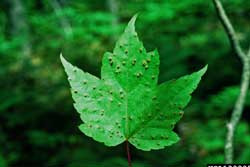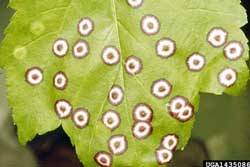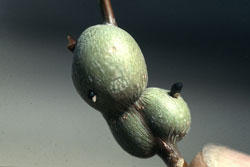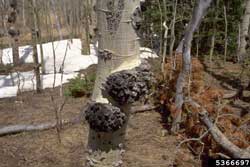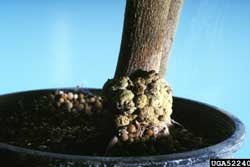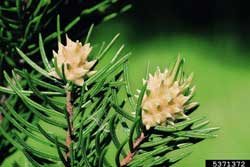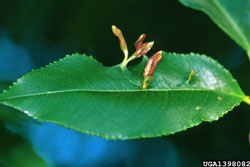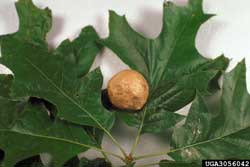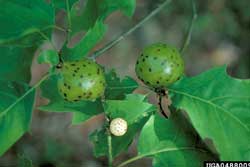Galls
Galls are abnormal growth on plants. They are caused by the feeding of living organism, most often insects, but also bacteria, fungi, nematodes and mites, on the plant. Although these growths may be unsightly, they usually do not affect the health or vigor of the host plant.
Click on images to view full-size
Identification and Control Information
- From the Maine Forest Service:
- Galls on Shade Trees and Shrubs (PDF)—Purdue University Extension
- Insect and Mite Galls (PDF)—University of Minnesota Extension Service
- Insect and Mite Galls (PDF)—Colorado State University Extension
- Galls on Plants (Oak Apple Gall, Oak Hedgehog Gall, Gouty Oak Gall, Maple Bladder Gall, Maple Spindle Gall, Ash Midrib Gall, Cooley Spruce Gall, Goldenrod Ball Gall, others) (PDF)—Cornell University Insect Diagnostic Laboratory
- Not All Galls Are Created Equal in the Plant World—Michigan State University Extension
- Bacterial Crown Gall on Ornamentals in the Landscape (PDF)—The Ohio State University Extension
- Gallery of Common Galls—NC State University, Department of Entomology
- Entomological Notes: Galls on Oak (PDF)—Penn State College of Agricultural Sciences Cooperative Extension
[Photos, left to right: Steven Katovich, USDA Forest Service, Bugwood.org; Clemson University - USDA Cooperative Extension Slide Series, , Bugwood.org; Whitney Cranshaw, Colorado State University, Bugwood.org; William Jacobi, Colorado State University, Bugwood.org; Division of Plant Industry Archive, Florida Department of Agriculture and Consumer Services, Bugwood.org; Gyorgy Csoka, Hungary Forest Research Institute, Bugwood.org; Steven Katovich, USDA Forest Service, Bugwood.org; James Solomon, USDA Forest Service, Bugwood.org; John H. Ghent, USDA Forest Service, Bugwood.org]
